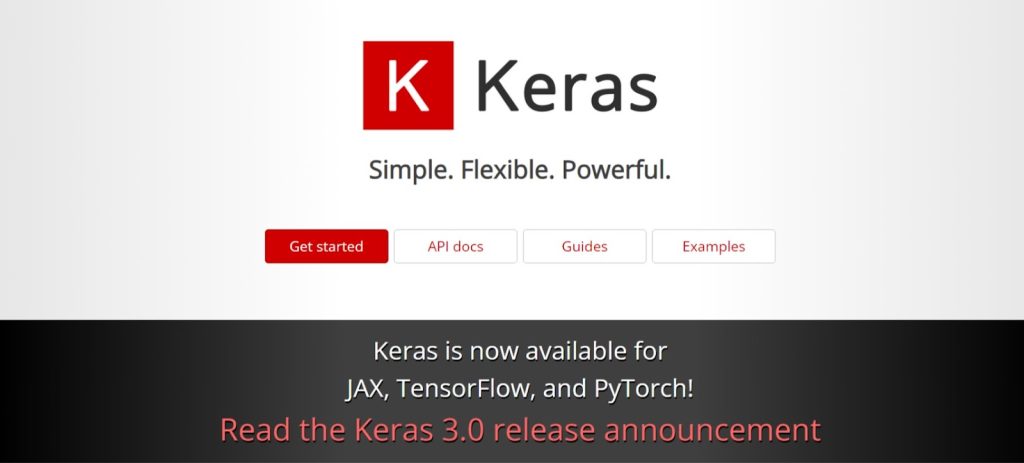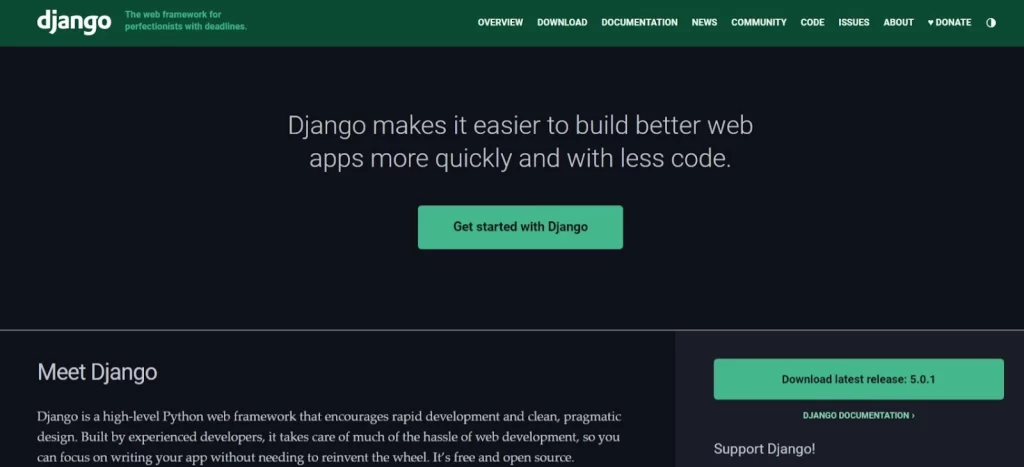
In recent years, there has been a significant surge in the adoption of Generative Artificial Intelligence (AI), propelling the creation of diverse and creative outputs such as images, music, and text. Prominent models like Generative Adversarial Networks (GANs), Variational AutoEncoders (VAEs), and the renowned Generative Pretrained Transformer 3 (GPT-3) have garnered immense popularity. Among these, the Stable Diffusion model stands out for its unique generative AI capabilities, making it a preferred choice among developers.
This deep learning model employs a controlled and gradual diffusion process to grasp the underlying data distribution of inputs, resulting in the generation of high-quality and diverse outputs. The Stable Diffusion model is a versatile solution across various applications, including text generation, audio processing, and image categorization. Developers can harness its capabilities to build applications with robust functionalities, enabling accurate predictions based on data inputs.
This article delves into the intricacies of the Stable Diffusion model, exploring its mechanisms in detail. Additionally, it covers aspects of app development using Stable Diffusion and highlights the model’s benefits. The concluding section identifies optimal platforms for constructing apps that leverage the Stable Diffusion model.
- What Is A Stable Diffusion?
How Does The Stable Diffusion Model Work?- Components In Stable Diffusion Development
- Advantages Of The Stable Diffusion Model in App Development
Potential Applications Of The Stable Diffusion Model In App Development- Best Platforms & Frameworks For Developing Stable Diffusion Apps
- How To Develop An App Using The Stable Diffusion Model?
- Tech Stack To Consider To Developing An App Using The Stable Diffusion Model
- 1. Deep Learning Frameworks
- Conclusion
- FAQ
What Is A Stable Diffusion?
Introduced by Stability.ai in 2022, Stable Diffusion is a notable advancement in artificial intelligence. This AI model, unveiled to the public, specializes in the unique task of text-to-image generation, offering a fresh and innovative approach to creating images based on textual prompts. What sets Stable Diffusion apart is its reliance on the latent diffusion model, a variant of the diffusion model known for its exceptional ability to effectively eliminate even the most resilient noise found in the data.
Employing a combination of machine learning app development techniques with a focus on deep learning, Stable Diffusion has undergone extensive training using image-text pairs sourced from the LAION-5B dataset. This unparalleled dataset features an impressive collection of over 5.85 billion meticulously curated image-text pairs. Incorporating such a vast and diverse dataset significantly enhances the model’s capability to comprehend intricate relationships between textual descriptions and visual content, resulting in a more precise and refined text-to-image generation process.
Stable Diffusion’s expertise lies in its capacity to interpret and amalgamate intricate details from textual input, transforming them into coherent and visually captivating images. By utilizing advanced machine learning subsets and the latent diffusion model, this AI model embodies the cutting-edge capabilities propelling the evolution of text-to-image generation within the realm of artificial intelligence. As an openly accessible tool, Stable Diffusion stands as a testament to the continuous advancements in AI, offering users a robust and inventive solution for generating visually compelling content based on textual descriptions.
How Does The Stable Diffusion Model Work?
Discover the workings of the Stable Diffusion model as we break down its processes, providing insights into its text-to-image generation capabilities and the underlying technologies that power this cutting-edge AI model.
Step 1: Text-to-Image Initialization
Stable Diffusion initiates the image generation process with the crucial step of text-to-image initialization. In this phase, a random tensor is generated within the latent space. This tensor, influenced by the random number generator’s seed, encapsulates the image’s latent form, manifesting initially as noise. The selection of the random seed is a pivotal factor, as it determines the unique characteristics of the latent image. The initial latent representation sets the stage for subsequent refinement, highlighting how Stable Diffusion transforms from a random latent state to a structured visual outcome. This process ensures a diverse range of potential visual outputs, even for the same textual prompt, showcasing the versatility of Stable Diffusion’s initialization mechanism.
Moreover, the random seed introduces an element of stochasticity, contributing to the variability in generated images. The random seed and latent space interplay underscores the model’s adaptability and capacity to produce distinct visual interpretations from the same textual input.
Step 2: Noise Prediction
Advancing to the next stage, Stable Diffusion employs the noise predictor U-Net to refine the latent image by predicting and mitigating noise. This sophisticated neural network takes the latent noisy image and the provided text prompt as input, utilizing them to predict noise within the latent space. The noise prediction process is pivotal for enhancing the image’s quality, reducing unwanted artifacts, and bringing clarity to the latent representation. By intelligently incorporating textual information, the model iteratively improves the fidelity of the image, preparing it for subsequent stages in the generative process.
The collaborative dynamics between the latent noisy image and the text prompt showcase the model’s ability to intelligently leverage visual and textual cues, demonstrating how Stable Diffusion adapts to input data to refine and enhance its generative capabilities. This phase sets the foundation for subsequent steps, ensuring the generated images align more closely with the intended textual descriptions.
Step 3: Noise Subtraction
Building on the refined latent image, Stable Diffusion proceeds to the noise subtraction step. Here, the model subtracts the predicted latent noise from the initial latent image, resulting in a transformed representation. This subtraction process aims to reduce unwanted elements, emphasizing the importance of noise elimination in enhancing the clarity and fidelity of the generated image. The iterative nature of this step, often repeated over multiple sampling iterations, allows Stable Diffusion to fine-tune the latent representation and improve the overall coherence of the image.
Step 4: Decoding
The final phase of Stable Diffusion involves the Variational Autoencoder (VAE) decoder, which plays a crucial role in translating the refined latent image back into pixel space. This decoding step is essential for producing the final AI-generated image that aligns with the input text prompt. The VAE decoder ensures that the latent representation is converted into a visually coherent and meaningful output. By bridging the gap between the latent and pixel spaces, this decoding process completes the generative cycle, providing a tangible and interpretable result based on the initial textual input.
Components In Stable Diffusion Development
There are following essential components that constitute Stable Diffusion development as we navigate through key elements shaping the creation of this advanced text-to-image generative AI model.
1. Latent Diffusion Model
Stable Diffusion operates as a latent diffusion model, introducing a unique approach to image processing. Instead of directly working within the expansive image space, the model first compresses the image into a latent space. This latent space is considerably smaller in dimension, leading to enhanced speed and efficiency in model computations. By condensing the image information into a more manageable latent form, Stable Diffusion optimizes its processing capabilities, allowing for faster and resource-efficient operations.
2. Variational Autoencoder (VAE)
The compression of images into the latent space is a key aspect achieved through the implementation of a variational autoencoder (VAE). This sophisticated technique involves two primary components: an encoder and a decoder. The encoder is responsible for compressing the image into the latent space, capturing essential features in a condensed representation. On the other hand, the decoder plays a crucial role in restoring the image from its compressed form. The VAE introduces a level of generative capability, allowing Stable Diffusion to compress information and reconstruct images effectively, contributing to the model’s overall versatility and proficiency.
3. Image Resolution
The relationship between image resolution and the size of the latent image tensor is a critical consideration in the Stable Diffusion model. The model compresses images into latent representations, and the resolution of the original image directly influences the size of the resulting latent image tensor. For example, a 512×512 image corresponds to a latent image size of 4x64x64. Understanding this relationship is essential, as generating images larger than 512×512 may lead to anomalies, such as the presence of duplicate objects. This insight into image resolution dynamics underscores the importance of thoughtful consideration when working with Stable Diffusion for different image sizes and qualities.
4. Image Upscaling
Addressing the challenge of generating larger prints, Stable Diffusion recommends a strategic approach to image upscaling. Maintaining at least one side of the image at 512 pixels is advised, and for further upscaling, the use of an AI upscaler or image-to-image function is recommended. Alternatively, the SDXL model provides a solution, supporting a default size of 1,024 x 1,024 pixels. This flexibility in image upscaling strategies ensures that Stable Diffusion can effectively handle diverse requirements, providing options for generating high-quality, larger images while mitigating potential anomalies or distortions that may arise during the upscaling process.
Advantages Of The Stable Diffusion Model in App Development
There are many advantages offered by the Stable Diffusion model, redefining the possibilities and efficiency in creating innovative and visually appealing applications which are mentioned below:
1. New Data Generation
Stable Diffusion models present a valuable asset for app development by enabling the generation of novel data akin to the original training data. This functionality proves especially useful for applications requiring diverse datasets, such as those involving image, text, or sound generation. Developers can leverage Stable Diffusion to expand their dataset, ensuring a more comprehensive and varied input for their applications. The model’s capacity to produce new and relevant data aligns well with the demands of creative applications, content generation, or scenarios where an extensive and diverse dataset is essential for optimal performance.
2. High-Quality Data
In comparison to other generative models, Stable Diffusion offers a distinct advantage in generating high-quality data. Its training process involves exposure to increasingly noisy versions of the original data, making the model less susceptible to overfitting. This characteristic results in the production of refined and accurate outputs, free from undesirable noise. The ability to generate high-quality data is particularly beneficial for applications that demand precision, clarity, and fidelity, such as image recognition, language processing, or any task where data accuracy is paramount.
3. Ease of Use
Stable Diffusion models stand out for their ease of implementation, thanks to their integration with popular deep learning frameworks such as TensorFlow or PyTorch. Leveraging the high-level APIs provided by these frameworks simplifies the development and training processes, making Stable Diffusion models accessible to a broader range of developers. This ease of use encourages experimentation and exploration, allowing developers to efficiently integrate generative capabilities into their applications without the need for extensive expertise in complex machine learning architectures.
4. Robustness
The robust nature of Stable Diffusion models positions them as a reliable choice for applications dealing with variations in data distribution over time. Their immunity to changes in data distribution ensures that the model maintains consistent performance even as the underlying data evolves. This makes Stable Diffusion well-suited for dynamic environments where the nature of input data may change, ensuring the continued effectiveness of applications that require stability and adaptability in the face of evolving datasets.
5. Transfer Learning
Stable Diffusion models facilitate transfer learning, a process wherein the model is fine-tuned on a smaller, task-specific dataset. This capability reduces the computational and data requirements for training high-quality models tailored to a specific use case. For app developers, transfer learning with Stable Diffusion provides a practical approach to customize the model’s capabilities for specialized tasks without the need for extensive resources. This versatility makes it feasible for developers to apply Stable Diffusion models to a wide array of applications, adapting to diverse needs and achieving efficient model reusability across various domains.
Potential Applications Of The Stable Diffusion Model In App Development
Explore how advanced AI model can revolutionize the creation of visually rich and dynamic applications through its unique text-to-image generation capabilities.
1. Image and Video Processing
One prominent application of the Stable Diffusion model in app development lies in image and video processing tasks. The model excels at denoising, inpainting, and super-resolution, allowing developers to enhance the quality of images and videos. By training the model on noisy images, it can generate clean and high-resolution outputs. This is particularly valuable in fields such as photography, entertainment, and content creation, where the quality of visual data is paramount. App developers can leverage Stable Diffusion for applications requiring improved image and video processing capabilities, contributing to a more immersive and visually appealing user experience.
2. Data Generation and Augmentation
The capability of the Stable Diffusion model to generate new data samples similar to the training data opens up opportunities for data generation and augmentation in app development. This is particularly advantageous in industries like healthcare, where obtaining annotated data can be challenging and expensive. In the context of medical imaging, for example, the model can create synthetic but realistic data, aiding in the development of robust and diverse machine learning models. App developers can harness this feature to address data scarcity issues, ensuring the robustness and generalization of their applications across various scenarios.
3. Anomaly Detection
Stable Diffusion models find valuable applications in anomaly detection, particularly in industries like finance and cybersecurity. These models excel at identifying unusual patterns or anomalies within large datasets, such as network logs or security events. In finance, they can assist in fraud detection, while in cybersecurity, they contribute to enhancing network security and quality control. The model’s ability to discern irregularities makes it a powerful tool for ensuring the integrity and security of systems, showcasing its significance in developing robust and secure applications.
4. Data Compression and Dimensionality Reduction
The Stable Diffusion model proves useful in addressing the challenges associated with large datasets by facilitating data compression and dimensionality reduction. In industries like finance and telecommunications, where storage constraints are a concern, these models can compress datasets into lower-dimensional representations. This not only aids in efficient data storage but also enhances the processing speed and resource utilization. App developers can integrate Stable Diffusion for applications dealing with substantial datasets, ensuring optimal performance and resource efficiency.
5. Time Series Analysis
With time-series data, such as stock prices, weather patterns, and energy consumption, the Stable Diffusion model becomes a valuable tool for time series analysis. Its capacity to forecast future values and predict trends makes it pertinent in various industries. In finance, it can aid in stock market predictions, while in weather forecasting, it can contribute to accurate predictions. App developers can incorporate Stable Diffusion for applications requiring precise time series analysis, providing users with valuable insights and predictions based on historical data patterns.
6. Recommender Systems
Recommender systems, prevalent in domains like e-commerce, music, and movies, benefit significantly from the Stable Diffusion model. By leveraging a user’s past interactions with products or services, the model can be trained to make personalized recommendations based on user behavior and preferences. This enhances user engagement and satisfaction, making it a valuable feature for app developers aiming to provide tailored and relevant content recommendations. Stable Diffusion’s ability to capture complex relationships in data patterns contributes to the effectiveness of recommender systems, creating a more personalized and user-friendly experience within various applications.
Best Platforms & Frameworks For Developing Stable Diffusion Apps
Here are the list of platforms and frameworks for building Stable Diffusion-powered applications that maximize efficiency and innovation in the era of text-to-image generation.
1. Streamlit

Streamlit emerges as a modern and responsive framework designed for creating interactive machine-learning applications, including those powered by Stable Diffusion models. It enables users to develop and deploy AI models without the need for complex coding or extensive web development skills. Streamlit’s appeal lies in its simplicity, offering an intuitive and highly customizable interface that facilitates the rapid creation of fast and responsive data-driven applications. Its ease of use, coupled with the capacity to handle large datasets and models, positions Streamlit as a popular platform for building AI applications. For Stable Diffusion app development, Streamlit provides a user-friendly environment that encourages experimentation and innovation, making it an attractive choice for developers seeking efficiency and agility in the development process.
2. Keras

Keras, an open-source software library, offers a seamless Python interface for artificial neural networks (ANNs) and operates on top of Theano, CNTK, or TensorFlow. With a focus on quick experimentation, Keras simplifies the creation, training, and evaluation of deep learning models, including Stable Diffusion models. This high-level API is designed to be accessible to developers of varying expertise levels and is compatible with both CPU and GPU environments. Keras provides a user-friendly interface for specifying Stable Diffusion model architecture, facilitating efficient training on large datasets. Its simplicity and versatility make Keras an advantageous platform for rapid development and experimentation in the Stable Diffusion app development landscape.
3. PyTorch

PyTorch, another prominent open-source platform, is widely utilized for developing deep learning models, offering a comprehensive toolkit for building, training, and deploying machine learning models, including Stable Diffusion. Renowned for its user-friendly and intuitive interface, PyTorch empowers developers in building and experimenting with various models. PyTorch’s dynamic computation graph and flexibility contribute to its popularity, enabling developers to explore and iterate upon Stable Diffusion model architectures efficiently. The platform’s rich ecosystem of tools and libraries supports the end-to-end development lifecycle, making PyTorch a valuable asset for those seeking an adaptable and developer-friendly environment for Stable Diffusion app development.
4. Django

Django, a high-level Python framework, plays a crucial role in the backend development of Stable Diffusion model-powered applications. Recognized for its ability to facilitate the rapid creation of robust and secure web applications, Django provides a set of libraries and tools tailored for managing web development tasks. This modular framework allows developers to seamlessly integrate or modify features, making it well-suited for building complex applications. Its emphasis on swift development aligns with the dynamic nature of AI applications, providing a solid foundation for constructing the backend infrastructure necessary for Stable Diffusion-powered apps. Django’s scalability and security features make it an apt choice for developers seeking efficiency and reliability in the backend development process.
5. TensorFlow

TensorFlow stands as a powerhouse in the realm of open-source platforms for developing machine learning (ML) models, including Stable Diffusion applications. Its versatility extends to various neural network architectures such as convolutional neural networks (CNNs), recurrent neural networks (RNNs), and deep neural networks (DNNs). TensorFlow not only offers a robust environment for training Stable Diffusion models but also provides a rich suite of tools and libraries crucial for preprocessing, transforming, and managing large datasets. This comprehensive support makes TensorFlow a preferred choice for developers seeking a holistic framework to build and deploy Stable Diffusion applications, ensuring efficiency and scalability in model development.
How To Develop An App Using The Stable Diffusion Model?
Discover the journey of developing an app using the innovative Stable Diffusion model in addition to a strategic and comprehensive approach.
1. Creating A Suitable Environment For App Development
Establishing a conducive development environment is a critical initial step in building an app with the Stable Diffusion model. The choice of a suitable programming language, such as Python or R, is influenced by the app’s complexity. Both languages offer extensive libraries for machine learning and deep learning, with Python being a popular choice. Setting up the development environment involves installing essential tools like code editors and relevant libraries, including machine learning frameworks like TensorFlow. This foundational step lays the groundwork for subsequent stages, providing developers with a structured workspace to streamline the app development process.
2. Preparing Data Based on Requirements to Train the Model
The success of training the Stable Diffusion model hinges on the quality and relevance of the input and output data. As part of app development, identifying the required data format (images, texts, etc.) and understanding specific attributes such as size, dimensions, and resolution is crucial. Once the data format is defined, the process of preparing the data for model training begins. This involves cleaning, organizing, and structuring the data in a manner conducive to effective training. The accuracy of the model heavily relies on the meticulous preparation of training data, ensuring it aligns with the app’s intended functionality.
3. Training The Stable Diffusion Model
Training the Stable Diffusion model is a pivotal step in the app development process, following the preprocessing of the prepared data. The use of a hierarchical configuration system, such as the Omega Conf library, facilitates loading a configuration file to configure model training options. Parameters like model path and seed generation path are specified, and a ‘load model’ function is employed to finalize the model configuration. This step is essential for optimizing the model’s performance, ensuring it learns from the prepared data efficiently and effectively.
4. Implementing Stable Diffusion Model Into The App
With the model trained and configured, the next phase involves integrating the Stable Diffusion model into the app. Initiating this step requires attention to the app’s user interface, encompassing aspects like layout, buttons, and input fields. The integration process includes linking the user interface to the trained Stable Diffusion model by loading it into TensorFlow and exposing it as a REST API through Django. Subsequently, the app’s functionality is intertwined with the model through coding, processing input data, and generating output. Rigorous testing and debugging follow, ensuring the seamless operation of the app and identifying and rectifying any potential glitches early in the development cycle. This thorough integration and testing process contribute to the app’s reliability and performance, aligning it with the intended user experience.
5. Deploying The App
In the culmination of the app development journey with the Stable Diffusion model, deploying the application marks the final stride. This pivotal step involves a series of meticulous actions to ensure a seamless and effective launch. Packaging the app is the initial task, requiring the creation of a comprehensive package containing all necessary files and libraries. Tools such as cx_Freeze prove valuable in packaging the app as a standalone executable, streamlining its deployment. The choice of a deployment platform becomes paramount, with options ranging from Apache web servers to the AWS cloud platform. Each platform presents unique considerations, influencing the subsequent steps in the app deployment procedure.
Choosing the right deployment platform aligns with the app’s specific requirements, determining factors such as scalability, performance, and accessibility. Once the deployment platform is selected, the actual deployment of the app takes place, adhering to the procedures dictated by the chosen platform. This step demands precision, as the successful deployment ensures the app’s accessibility to users and sets the stage for continuous monitoring.
Monitoring app performance post-deployment is a critical aspect of maintaining a high-quality user experience. Regular evaluation of the app’s performance parameters is necessary to identify and address any issues or bugs that may arise during usage. Leveraging tools provided by the chosen deployment platform, such as AWS CloudWatch, facilitates the systematic monitoring of the app’s statistics, performance, and resource consumption. Automated remediation actions can be implemented to address discovered issues promptly, ensuring the app remains in optimal condition and meets the evolving needs of users. Continuous monitoring and proactive issue resolution contribute to the sustained success and effectiveness of the app in the dynamic landscape of Stable Diffusion-powered applications.
Tech Stack To Consider To Developing An App Using The Stable Diffusion Model
A robust tech stack is required when developing an app that makes use of the Stable Diffusion paradigm. Consider the following as the vital components of the tech stack:
1. Deep Learning Frameworks
- TensorFlow
- PyTorch
- Keras
2. Programming Language
- Python
- Julia
- R
3. Neural Network Architectures
- GANs (Generative Adversarial Networks)
- VAEs (Variational AutoEncoders)
- CNNs (Convolutional Neural Networks)
4. Data Processing
- Pandas
- NumPy
- SciPy
5. Deployment and Integration
- Docker
- Kubernetes
- Flask
6. Cloud Services
- AWS (Amazon Web Services)
- Azure (Microsoft Azure)
- Google Cloud
7. App Development Framework
- Flask
- Django
- Express.js
8. User Interface (UI) Development
- React
- Angular
- Vue.js
9. Database
- MongoDB
- MySQL
- PostgreSQL
Conclusion
Building an AI-based application using the Stable Diffusion model is a strategic move towards achieving unparalleled performance and features. In the realm of AI applications, Stable Diffusion stands out for its robustness and advantages over traditional approaches. The journey of app development with Stable Diffusion involves intricate steps, demanding expertise in data gathering, model training, seamless integration into the app, and meticulous monitoring post-launch.
To embark on this challenging yet rewarding journey, a strong foundation in the Stable Diffusion model is essential. Mastery of coding languages, particularly Python, becomes a non-negotiable requirement for developers looking to harness the full potential of Stable Diffusion in their applications.
For businesses considering the adoption of the Stable Diffusion model in their app development journey, partnering with a specialized service provider like Idea Usher can be beneficial. Idea Usher combines expertise in AI technologies with a proven track record in app development, offering tailored solutions that align with business goals. Leveraging the proficiency of Idea Usher’s development teams ensures a seamless and efficient integration of the Stable Diffusion model into your app, delivering a feature-rich and high-performing solution that meets the unique demands of your business.
With Idea Usher as your technology partner, you can confidently navigate the complexities of Stable Diffusion app development, unlocking the full potential of AI for your business. From concept to deployment and continuous monitoring, Idea Usher provides end-to-end support, ensuring your app stands out in the market, impacting your users, and contributing to your business’s success in the evolving digital landscape.
FAQ
Q: How is Stable Diffusion trained?
A: Stable Diffusion is trained through a controlled and gradual diffusion process, where the model learns the underlying data distribution of inputs over successive steps. This method ensures the generation of high-quality and diverse outputs by capturing the intricate patterns within the data.
Q. Why does Stable Diffusion work?
A. Stable Diffusion’s efficacy lies in its ability to comprehend and model the complex relationships present in the input data. The controlled diffusion process enables the model to capture the underlying data distribution effectively, resulting in the generation of coherent and diverse outputs with enhanced quality.
Q. What technology does Stable Diffusion use?
A. Stable Diffusion leverages deep learning technology to implement its controlled diffusion process. This involves utilizing neural networks and advanced algorithms to learn and model the intricate patterns within the input data, enabling the generation of sophisticated and varied outputs across applications such as text, audio, and image processing.










Gaurav Patil